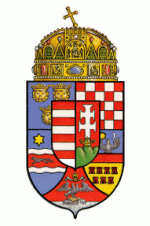Okay, having done some more research, I'm now convinced that despite my early opinion of the button shown in original-poster Pike's photos, it has finally been correctly ID-ed (by BigCypressHunter) as a World-War-One-or-earlier Austro-Hungarian artilleryman's button. Nice work, BCH.

Here's a link to a photo showing the Austro-Hungarian artillery button on an original 1896 uniform:
http://www.lovettartillery.com/Austro_Hungarian_FA_EM_Tunic.html
I was misled by the very-very strange shape of the cannon (it looks like it dates from the 14th-Century) -- and also by the fact that one of the three cannonballs is a
lot larger than the other two. A cannon doesn't shoot different-sized cannonballs ...and therefore, on absolutely EVERY American and British and French artillery button I've ever seen, the grouped cannonballs are always all the same size as each other. (To see what I mean, check each of the many artillery button photos in the Albert button-book and Tice button-book.)
I think it's worth mentioning that (quite surprisingly) nearly all of US-digger Pike's many buttons from his Utah site have turned out to be Foreign origin -- mostly European (and especially, Austrian) origin.
In addition to the Austro-Hungarian artillery button:
button showing the Hungarian crown,
the "Wien" backmarked buttons (Austrian name for Vienna, its capital city),
crossed-swords button's backmark has "AS" - the abbreviation for Austria,
the "Qualitat" backmark (German/Austrian word for quality),
the crossed-hammers emblem is a common logo for the Mining Industry in Europe,
button showing a fireman's helmet with the long low "crest" on it is an antique European style helmet, used by both soldiers and firemen,
the Policeman's "P" button has an Old-English (European) letter P,
the Waterbury Buttons website shows that company made some of Pike's fireman's-buttons for European countries,
Royal Canadian Navy button,
French or German army regimental button with just a European-style "5" on it.








